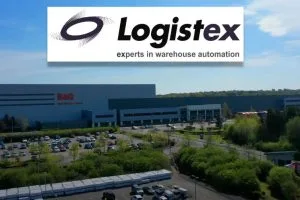Running the numbers
Can you afford not to consider automation? That’s the question posed by Logistex business development director Derek Kay.
The UK has always been a forward looking country in terms of workers’ rights and the recent Brexit vote is unlikely to change that. Indeed, the introduction of the living wage in April 2016 and the commitment by the Government to raise that to over £9 per hour by 2020 is laudable.
At the same time the introduction of auto-enrolment into employer pension schemes by the Government – most notably under the NEST initiative (although there are other options for employers) – reinforces the position of the UK as a country that has its workers’ rights to a fair wage close to its heart.
Naturally, as with any externally imposed additional cost, some businesses have raised concerns that the introduction of these schemes is going to severely impact their ability to trade profitably. The question that arises is what these schemes actually mean in terms of real additional costs between now and 2020?
Based on the proposed rates of implementation and assuming take up of NEST, many will be surprised to find that a full time equivalent worker (FTE) earning minimum wage in 2015 is actually likely to cost at least 37% more to employ in 2020. So for every 3 FTEs employed in 2020, businesses will be paying for the 2015 equivalent of 4 FTEs.
Given that many manual warehouses have a large employee base, particularly with the huge increase in order picking required by the rise of eCommerce, the employment costs are going to significantly increase over the next 4 years.
The table below shows how the 37% figure is made up.
Assuming the following:
- FTE’s in 2015 were earning minimum wage.
- FTE’s work 40 hours per week and 47 weeks per year, allowing for holiday etc.
- FTE’s choose to increase their NEST payments in line with the minimum company match percentage.
- The lower limit above which NEST is payable remains at £5,772
The table below shows the how the 37% figure is arrived at between 2015 and 2020.
|
2015 |
2016 |
2017 |
2018 |
2019 |
2020 |
|
|
Living Wage annual increase |
7.5% |
6% |
6% |
6% |
5% |
|
|
Nest employer cost (auto enrolment) |
0% |
1% |
2% |
3% |
3% |
3% |
|
Minimum/Living wage hourly rate |
£6.70 |
£7.20 |
£7.63 |
£8.09 |
£8.58 |
£9.00 |
|
Annual Wage |
£12,596 |
£13,536 |
£14,344 |
£15,209 |
£16,130 |
£16,920 |
|
Nest employer cost (auto enrolment) |
0 |
£77.64 |
£171.45 |
£283.12 |
£310.75 |
£334.44 |
|
Annual Wage increase |
£940 |
£808 |
£865 |
£921 |
£790 |
|
|
Additional Annual Cost |
£1,018 |
£980 |
£1,148 |
£1,232 |
£1,124 |
|
|
Annual Wage increase Cumulative |
£940 |
£1,748 |
£2,613 |
£3,534 |
£4,324 |
|
|
Cost increase including Nest |
£1,018 |
£1,920 |
£2,896 |
£3,845 |
£4,658 |
This does not factor in the increase in employers national insurance payments that will also be due.
The percentage increase per year for the living wage is based on the Government’s stated intention to raise the rate to above £9 per hour by 2020.
|
Per FTE |
||||||
|
Cost increase from 2015 – 2020 |
37% |
|||||
|
Additional cost to employer per FTE in 2020 |
£4,658 |
The cumulative impact of the two initiatives is unlikely to be supported by a similar increase in revenue to the employer through price increases.
In light of what to many is likely to be a surprisingly large increase in the employee cost base, the case for automation within the warehouse may have a more rapid and consequently more attractive return on investment (ROI).
When considering the introduction of any level of mechanisation or indeed automation of warehouse processes it’s important that the solution proposed integrates holistically with the whole of the operation. It might be enough to just add a bagging machine to the despatch process to cut down on manpower requirements, but in all likelihood significantly greater savings can be made if the entire operation is reviewed. Bearing in mind the budget available an experienced solutions integrator should be able propose a solution which meets the needs of a business both now and in the future.
Logistex are an independent automated solutions integrator with no manufacturing ties, as such we are able to design mechanised and automated solutions which use the most appropriate equipment available in the market, not just those manufactured in house. By combining this equipment with the LWS Reflex Warehouse Management and Control software, Logistex can provide a service from concept design right through to implementation and lifetime support.
The solution Logistex designed and installed for the Superdrug eCommerce warehouse resulted in a 48% increase in throughput in the first year, achieved using 60% less operational cost.
Whatever your feelings about automation within a warehouse environment, the increase in employee costs should make you at least think again; remember, automation requires neither a living wage nor a pension.




